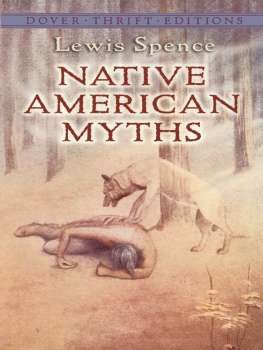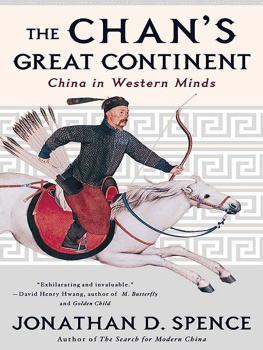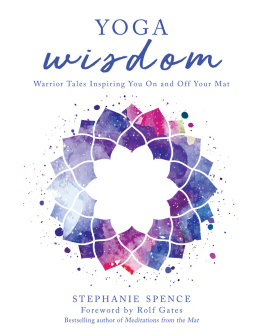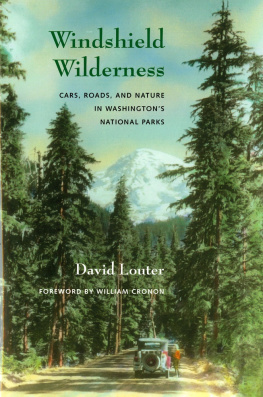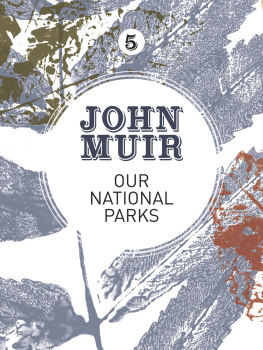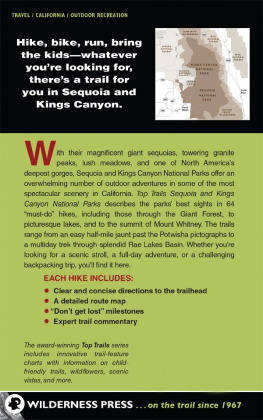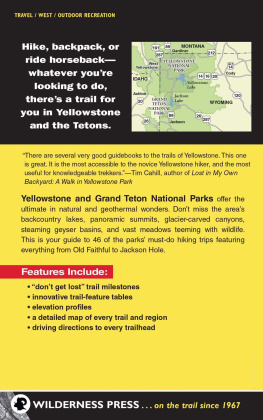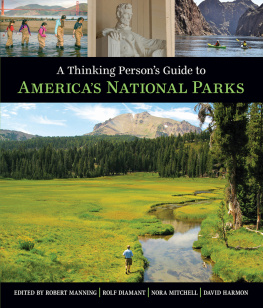Spence - Dispossessing the wilderness: Indian removal and the making of the national parks
Here you can read online Spence - Dispossessing the wilderness: Indian removal and the making of the national parks full text of the book (entire story) in english for free. Download pdf and epub, get meaning, cover and reviews about this ebook. year: 1999, publisher: Oxford University Press, genre: Politics. Description of the work, (preface) as well as reviews are available. Best literature library LitArk.com created for fans of good reading and offers a wide selection of genres:
Romance novel
Science fiction
Adventure
Detective
Science
History
Home and family
Prose
Art
Politics
Computer
Non-fiction
Religion
Business
Children
Humor
Choose a favorite category and find really read worthwhile books. Enjoy immersion in the world of imagination, feel the emotions of the characters or learn something new for yourself, make an fascinating discovery.

- Book:Dispossessing the wilderness: Indian removal and the making of the national parks
- Author:
- Publisher:Oxford University Press
- Genre:
- Year:1999
- Rating:3 / 5
- Favourites:Add to favourites
- Your mark:
- 60
- 1
- 2
- 3
- 4
- 5
Dispossessing the wilderness: Indian removal and the making of the national parks: summary, description and annotation
We offer to read an annotation, description, summary or preface (depends on what the author of the book "Dispossessing the wilderness: Indian removal and the making of the national parks" wrote himself). If you haven't found the necessary information about the book — write in the comments, we will try to find it.
Dispossessing the wilderness: Indian removal and the making of the national parks — read online for free the complete book (whole text) full work
Below is the text of the book, divided by pages. System saving the place of the last page read, allows you to conveniently read the book "Dispossessing the wilderness: Indian removal and the making of the national parks" online for free, without having to search again every time where you left off. Put a bookmark, and you can go to the page where you finished reading at any time.
Font size:
Interval:
Bookmark:
DISPOSSESSING the WILDERNESS
Indian Removal and the
Making of the National Parks
Mark David Spence

Oxford University Press
Oxford New York
Athens Auckland Bangkok Bogot Buenos Aires Calcutta
Cape Town Chennai Dar es Salaam Dehli Florence Hong Kong Istanbul
Karachi Kuala Lumpur Madrid Melbourne Mexico City Mumbai
Nairobi Paris So Paulo Singapore Taipei Toyko Toronto Warsaw
and associated companies in
Berlin Ibadan
Copyright 1999 by Oxford University Press, Inc.
Published by Oxford University Press, Inc.
198 Madison Avenue, New York, New York 10016
Oxford is a registered trademark of Oxford University Press
All rights reserved. No part of this publication may be reproduced,
stored in a retrieval system, of transmitted, in any form or by any means,
electronic, mechanical, photocopying, recording, or otherwise,
without the prior permission of Oxford University Press.
Library of Congress Cataloging-in-Publication Data
Spence, Mark David.
Dispossessing the wilderness : Indian removal and the making of the
national parks/by Mark David Spence.
p. cm.
Includes bibliographical references.
ISBN 0-19-511882-0
1. Indians of North AmericaRelocationWest (U.S.)
2. Wilderness areasGovernment policyUnited States. 3. National
parks and reservesGovernment policyUnited States. 4. Nature
conservationSocial aspectsUnited States. I. Title.
B98.R4S64 1999
978.00497dc21 98-27456
1 3 5 7 9 8 6 4 2
Printed in the United States of America
on acid free paper
Wallace Spence, may this help to close the circle.
Therese Mary Johnson, for making this possible.
Amanda Kate Allaback, for seeing it to the end.
MANY PEOPLE HAVE ENCOURAGED and supported my long fascination with the subjects of this book. My family and friends have all contributed more than I can possibly acknowledge here. Some expressed genuine interest in my work while others just politely feigned a mild concern, but all have tolerated with much patience and good humor the social deficiencies of a young academic. My very deepest thanks to all.
Colleagues and mentors have also become friends along the way, and I would like to acknowledge a number of professional and personal debts that I shall long struggle to repay. Michael OConnell of the University of California, Santa Barbara, first introduced me to the challenges and rewards of serious historical study. I owe much to the University of California, Los Angeles, where Ellen DuBois, Susanna Hecht, Melissa Meyer, and Theodore Porter provided a great deal of encouragement and insight. Tanis Thorne also gave a portion of the manuscript a valuable critique at an important juncture. Likewise, Hal Rothman, Elliott West, Susan Rhoads Neel, Stephen Aron, and Peter Nabokov offered kind criticism on various portions of the manuscript. Jim Sherow read an entire draft, as did a number of anonymous referees, and all provided invaluable suggestions for improving this book. Besides offering wonderful advice and commentary, Marguerite Shaffer, Louis Warren, and Karl Jacoby generously shared their own scholarship. My greatest thanks go to Norris Hundley Jr. of the University of California, Los Angeles. His diligence, wise advice, and elegant use of language make him a model advisor. I can only hope my work justly reflects his great attention and care.
A number of institutions supported the research and writing of this work, including the Andrew W. Mellon Foundation, the Huntington Library, the UCLA Department of History, the William Andrews Clark Memorial Library, the UCLA American Indian Studies Center, and the Carey McWilliams Awards Fund. All illustrations were acquired with the financial assistance of Knox College.
Portions of the material in appeared in the Pacific Historical Review (1996), published by the University of California Press.
I have had the good fortune of conducting research in a number of excellent archives and libraries in some extraordinary places. Beth Gunnison and Deirdre Shaw at Glacier National Park, Tom Tankersley and Lee Whittlesey at Yellowstone National Park, and Linda Bade at Yosemite National Park graciously shared their knowledge of park history and pointed out dozens of crucial documents that I could never have found on my own. I also benefited greatly from the expertise of Peter Blodgett at the Huntington Library, Caroll Sommer at the William Andrews Clark Memorial Library, Magdalen Medicine Horse at the Little Big Horn College Archives, and Joyce Justice at the Denver Federal Archives and Records Center. Likewise, I owe a great debt to the expert staffs of the National Archives I and II in Washington, D.C., and College Park, Maryland, the Seattle Federal Archives and Records Center, the Bancroft Library, the Merril G. Burlingame Special Collections at Montana State University, the Montana Historical Society, the Southwest Museum in Los Angeles, and the Special Collections of the University of California, Los Angeles.
Some of my deepest thanks go to Barbara Sutteer, Ted Hall, David Ruppert, and Craig Bates of the National Park Service; Chief Earl Old Person, Mike Swims Under, Marvin Weatherwax, Curly Bear Wagner, Joyce Spoonhunter, Ramona Hall, Darrell Kipp, and other members of the Blackfeet Nation; Genevieve Edmo, Tony Galloway, John Fred, Larry Bagley, Diane Yupe, and other members of the Shoshone-Bannock Tribes; Jay Johnson and other members of the American Indian Council of Mariposa County; and Mick Old Coyote, Darrel Old Horn, Francis and Celise Stewart, John Pretty On Top, and other members of the Crow Tribe. All have generously provided guidance, assistance, and invaluable knowledge.
Finally, I would like to dedicate this book to three people: Wallace Spence, whose strange life long ago cemented my own connection to many of the places and personalities discussed in this study; my mother, Therese Mary Johnson, whose integrity, love, and pride are the source of endless inspiration; and my wife, Amanda Kate Allaback, whose love and encouragement made this work just one of lifes many great joys.
DISPOSSESSING the WILDERNESS
From Common Ground
I wonder if the ground has anything to say? I wonder if the ground is listening to what is said? I wonder if the ground would come alive and what is on it?
We-ah Te-na-tee-ma-ny,
or Little Chief (Cayuse), 1855
SHORTLY AFTER THE ESTABLISHMENT OF Badlands National Monument in 1929, the Oglala Sioux spiritual leader Black Elk expressed profound consternation with the idea of wilderness preservation. For him, the creation of the national monument adjacent to his home on the Pine Ridge Reservation in South Dakota seemed only to confirm a disturbing trend. Wind Cave National Park had already been established in the nearby Black Hills, and large areas of land surrounding the park had recently been incorporated into a national forest. Remembering his youth and the time he spent in these areas, Black Elk recalled that his people were happy in [their] own country, and were seldom hungry, for then the two-leggeds and the four-leggeds lived together like relatives, and there was plenty for them and for us. Although a considerable portion of this Sioux country received federal protection, native peoples were largely excluded from their former lands. As Black Elk observed, the Americans had made little islands for us and other little islands for the four-leggeds, and every year the two were moving farther and farther apart. In short, Black Elk understood all too well that wilderness preservation went hand in hand with native dispossession.
Next pageFont size:
Interval:
Bookmark:
Similar books «Dispossessing the wilderness: Indian removal and the making of the national parks»
Look at similar books to Dispossessing the wilderness: Indian removal and the making of the national parks. We have selected literature similar in name and meaning in the hope of providing readers with more options to find new, interesting, not yet read works.
Discussion, reviews of the book Dispossessing the wilderness: Indian removal and the making of the national parks and just readers' own opinions. Leave your comments, write what you think about the work, its meaning or the main characters. Specify what exactly you liked and what you didn't like, and why you think so.


